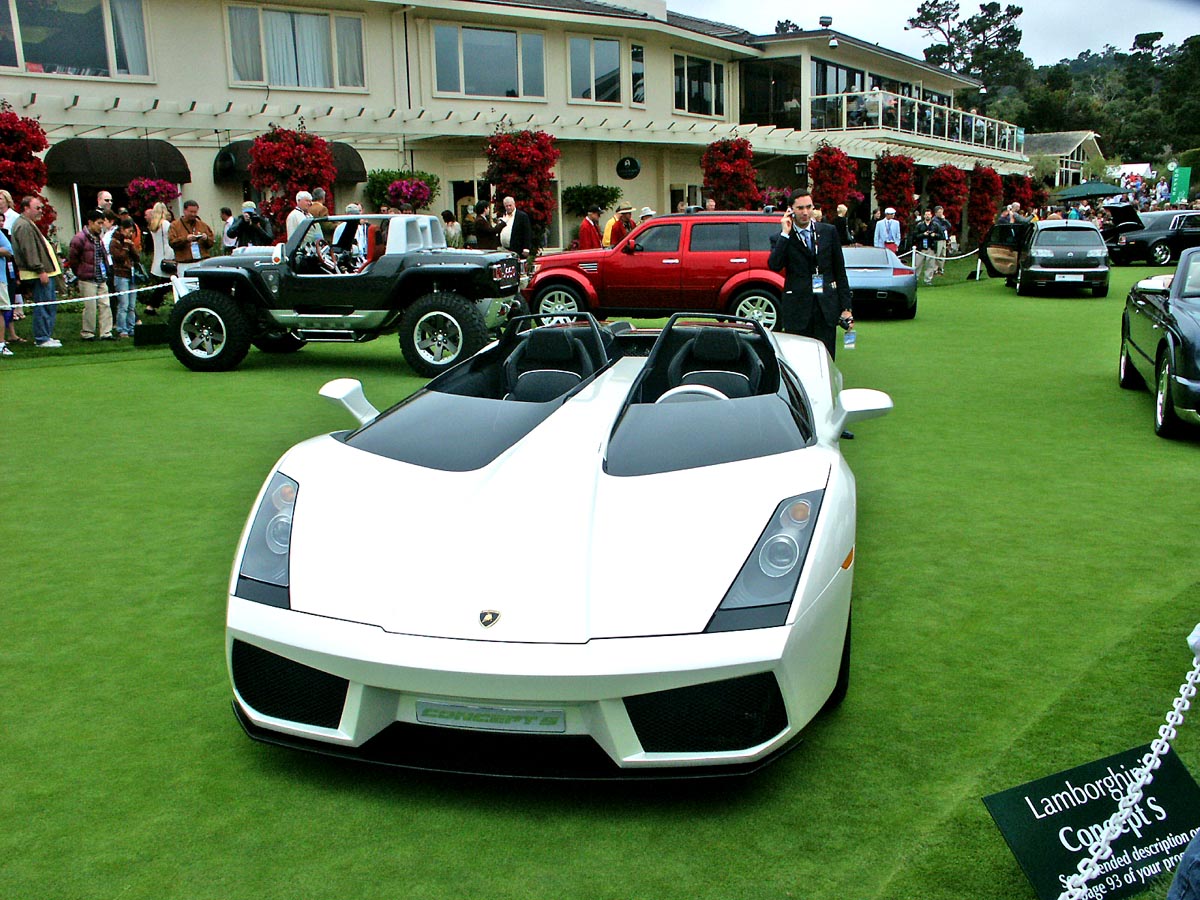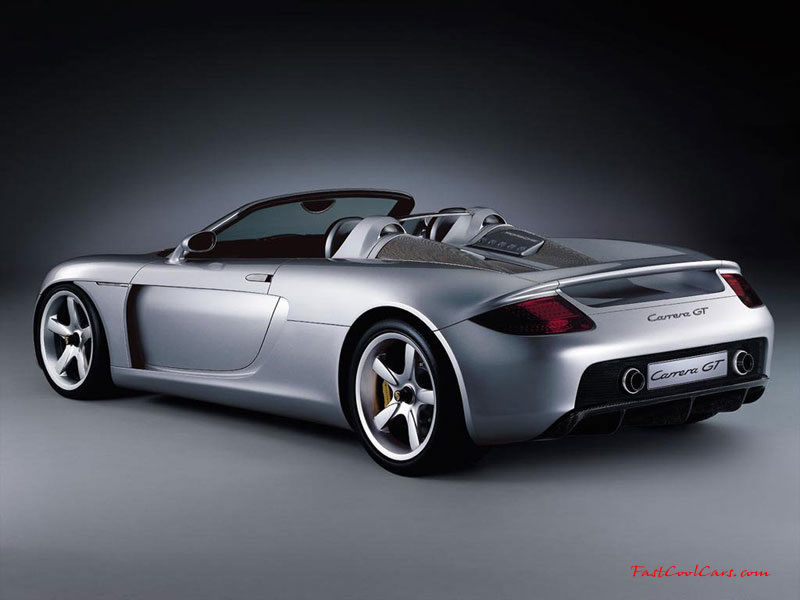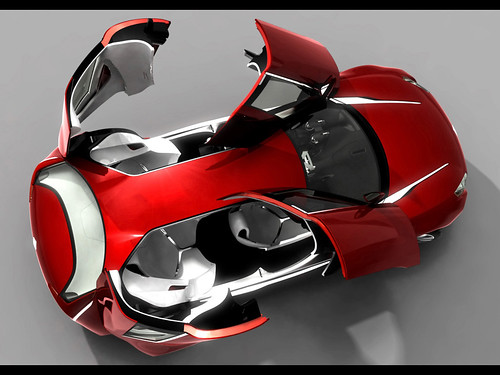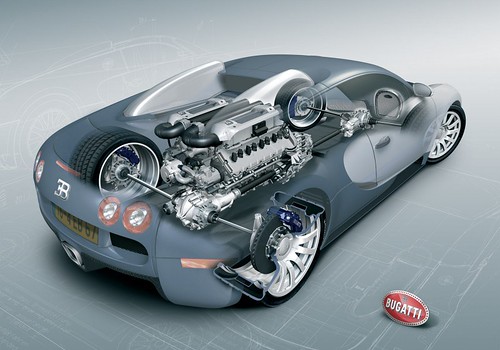The transmission is a dual-clutch direct-shift gearbox computer-controlled automatic with seven gear ratios, with magnesium paddles behind the steering wheel and a shift time of less than 150 milliseconds, by Ricardo of England rather than Borg-Warner, who designed the six speed DSG used in the mainstream Volkswagen Group marques. The Veyron can be driven in either semi- or fully-automatic mode. A replacement transmission for the Veyron costs just over $120,000. It also has permanent four wheel drive using the Haldex Traction system. It uses special Michelin PAX run flat tires, designed specifically to accommodate the Veyron's top speed, which reportedly cost $25,000 US per set.[6] The tyres can be removed from the rims only in France, a service which reportedly costs $70,000. Kerb weight is 2,034.8 kilograms (4,486 lb).[6] This gives the car a power to weight ratio, according to Volkswagen Group's 1,001 brake horsepower (746 kW; 1,015 PS) figures, of 446.3 bhp per ton.
The car's wheelbase is 2,710 mm (106.7 in). Overall length is 4,462 mm (175.7 in), width 1,998 mm (78.7 in) and height 1,204 mm (47.4 in).
The Veyron's hydraulic rear spoiler in the extended position
The Bugatti Veyron has a total of ten radiators.[7]
* 4 radiators for the engine cooling system.
* 1 heat exchanger for the air-to-liquid intercoolers.
* 2 for the air conditioning system.
* 1 transmission oil radiator.
* 1 differential oil radiator.
* 1 engine oil radiator.
It has a drag coefficient of 0.41 (normal condition) and 0.36 (after lowering to the ground),[8] and a frontal area of 2.07 square metres (22.3 sq ft).[9] This gives it a CdA value of 8.0 sq ft (0.74 m2). bugatti veyron for sale
bugatti veyron for sale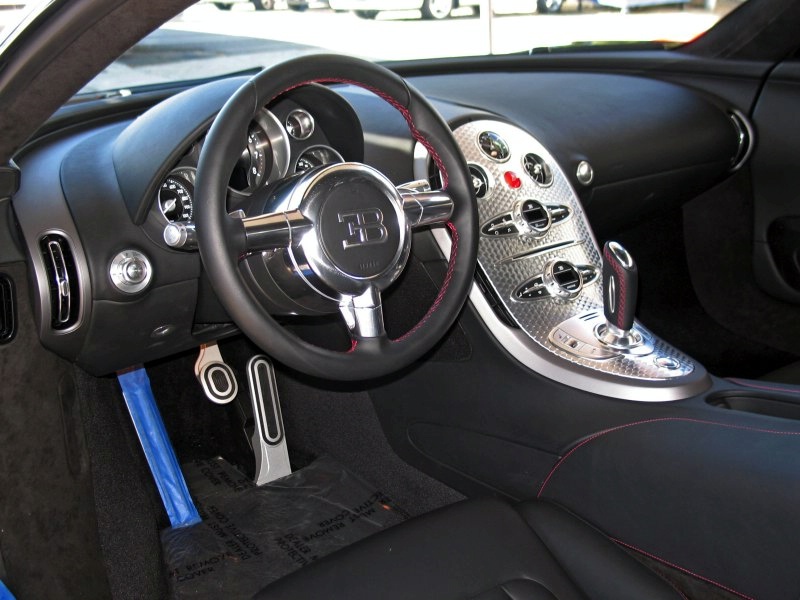 bugatti veyron for sale
bugatti veyron for sale bugatti veyron for sale
bugatti veyron for sale bugatti veyron for sale
bugatti veyron for sale bugatti veyron for sale
bugatti veyron for sale
Bugatti Veyron For Sale 2010 2011
Thursday, September 23, 2010 10:58 AM
|0 commentsBugatti Veyron Cars For Sale
10:16 AM
|0 commentsThe Bugatti Veyron EB 2.4 is a mid-engined grand touring car. The Super Sport version is the fastest production car in the world, with a top speed of 431.072 kilometres per hour (267.856 mph)[4].The original version has a top speed of 408.47 km/h (253.81 mph).[5]
Designed and developed by the German Volkswagen Group and produced by Bugatti Automobiles SAS at their headquarters in Château St. Jean in Molsheim (Alsace, France), the Veyron's chief designer was Hartmut Warkuss, and the exterior was designed by Jozef Kabaň of Volkswagen, with much of the engineering work being conducted under the guidance of a former peterbuilt engineer and now Bugatti Engineering chief Wolfgang Schreiber.
The car is named after French racing driver Pierre Veyron, who won the 24 hours of Le Mans in 1939 while racing for the original Bugatti company. It was named Car of the Decade (2000–2009) by the BBC television programme Top Gear.
A number of special variants have been produced, including two targa tops. Bugatti Veyron
Bugatti Veyron Bugatti Veyron
Bugatti Veyron Bugatti Veyron
Bugatti Veyron Bugatti Veyron
Bugatti Veyron Bugatti Veyron
Bugatti Veyron
Lamborghini Top Racer 2010
Wednesday, September 22, 2010 12:38 PM
|0 commentsAutomobili Lamborghini S.p.A.,[Notes 1] commonly referred to as Lamborghini (pronounced [lamborˈɡini] ( listen)), is an Italian automaker based in the small township of Sant'Agata Bolognese. The company was founded in 1963 by manufacturing magnate Ferruccio Lamborghini, who set out to create a refined grand touring car.
The company's first offerings, the 350GT and 400GT, were noted for their refinement, power, and comfort. Lamborghini gained wide acclaim in 1966 for the Miura sports coupé, which established mid-engine design as the standard layout for high-performance cars of the era. After a decade of rapid growth, hard times befell the company in the mid-1970s, as sales plunged in the wake of the 1973 world financial downturn and oil crisis. After a bankruptcy and three changes in ownership, Lamborghini came under the corporate umbrella of the Chrysler Corporation. The American company failed to return the automaker to profitability and sold it to Indonesian interests in 1994. Lamborghini's lack of success continued through the 1990s, until the company was sold in 1998 to AUDI AG, a subsidiary of the Volkswagen Group, a German automotive concern. Audi's ownership marked the beginning of a period of stability and increased productivity for Lamborghini, with sales increasing nearly tenfold over the course of the 2000s. A world financial crisis in the late 2000s saw Lamborghini's sales cut in half, leading CEO Stephen Winkelmann to predict continued poor sales for supercar makers.
Assembly of Lamborghini cars continues to take place at the automaker's ancestral home in Sant'Agata Bolognese, where engine and automobile production lines run side-by-side at the company's single factory. Each year, the facility produces fewer than 3,000 examples of the four models offered for sale, the V10-powered Gallardo coupé and roadster and the flagship V12-powered Murciélago coupé and roadster. The range is occasionally complemented by limited-edition variants of the four main models, such as the Reventón and a number of Superleggera trim packages. Lamborghini
Lamborghini Lamborghini
Lamborghini Lamborghini
Lamborghini Lamborghini
Lamborghini Lamborghini
Lamborghini
Lamborghini Embolado Amazing Cars
12:23 PM
|0 commentsHot Cars Hot Cars
9:15 AM
|0 commentsBody adjustment involves adding or modifying spoilers and a body kit. Sometimes this is done to improve the aerodynamic performance of a vehicle, as in the case of some wings or bumper canards, or to lighten the vehicle through the replacement of components, such as bells and mirrors with components manufactured from compounds such as lighter CRFP. Speeds and cornering adhesion can be improved through the generation of aerodynamic load.
Most often however, these changes are mainly to improve the appearance of a vehicle, such as non-functioning scoops, spoilers, wide arches or any aesthetic modification, which offers no benefit to performance. Very rarely an after market spoiler or body kit improve performance, the majority add weight and increase the coefficient of drag of the vehicle and thus reduce its overall performance.
Increasing the wheel gauge through separators and car body kits enhance the capacity of the curves. Lowering the center of gravity is another objective of keeping the body through the suspension treated with modifications. Hot Cars
Hot Cars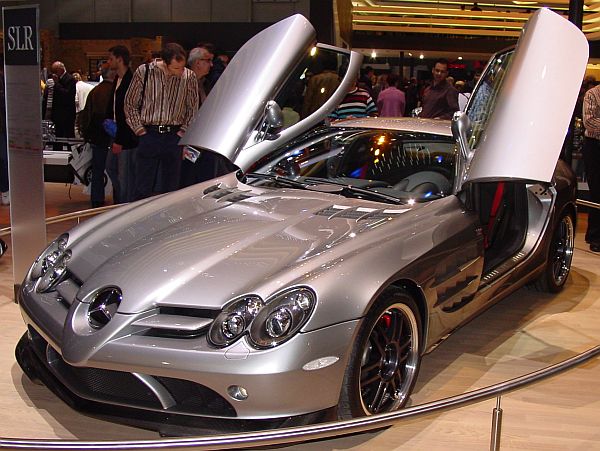 Hot Cars
Hot Cars Hot Cars
Hot Cars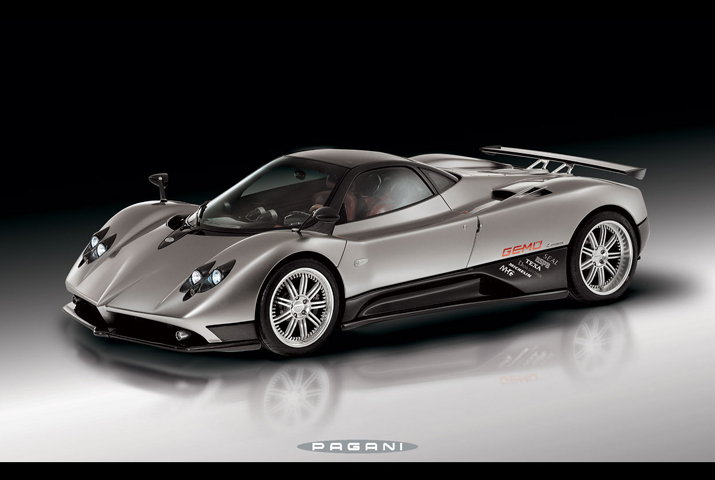 Hot Cars
Hot Cars Hot Cars
Hot Cars
Suzuki Samurai Wheels
Tuesday, September 7, 2010 5:52 AM
|0 commentsThe history of Suzuki four wheel drive cars goes back to 1968. Suzuki bought former Japanese automaker Hope Motor Company which had produced fifteen small off-road vehicles called the HopeStar ON360. Then in 1970, they produced the first "real" Suzuki 4x4. It was called the LJ10, and it had an air cooled, 359 cc, two-stroke, in-line two-cylinder engine. 1972 saw the introduction of the LJ20. The cooling was changed from air cooling to water cooling due to newly enacted emission regulations, and gained 3 hp. In 1975, Suzuki complemented the LJ20 with the LJ50, which had a larger 539 cc, two-stroke, in-line three-cylinder engine and bigger differentials. This was originally targeted at the Australian market, but more exports soon followed Suzuki Samurai
Suzuki Samurai Suzuki Samurai
Suzuki Samurai Suzuki Samurai
Suzuki Samurai Suzuki Samurai
Suzuki Samurai Suzuki Samurai
Suzuki Samurai
Suzuki Cars 2011 2012
5:48 AM
|0 commentsIn 1909, Michio Suzuki (1887–1982) founded the Suzuki Loom Works in the small seacoast village of Hamamatsu, Japan. Business boomed as Suzuki built weaving looms for Japan's giant silk industry.[5] In 1929, Michio Suzuki invented a new type of weaving machine, which was exported overseas. Suzuki filed as many as 120 patents and utility model rights.[citation needed] The company's first 30 years focused on the development and production of these exceptionally complex machines.[citation needed]
Despite the success of his looms, Suzuki realized his company had to diversify and he began to look at other products. Based on consumer demand, he decided that building a small car would be the most practical new venture. The project began in 1937, and within two years Suzuki had completed several compact prototype cars. These first Suzuki motor vehicles were powered by a then-innovative, liquid-cooled, four-stroke, four-cylinder engine. It featured a cast aluminum crankcase and gearbox and generated 13 horsepower (9.7 kW) from a displacement of less than 800cc.
With the onset of World War II, production plans for Suzuki's new vehicles were halted when the government declared civilian passenger cars a "non-essential commodity." At the conclusion of the war, Suzuki went back to producing looms. Loom production was given a boost when the U.S. government approved the shipping of cotton to Japan. Suzuki's fortunes brightened as orders began to increase from domestic textile manufacturers. But the joy was short-lived as the cotton market collapsed in 1951.
Faced with this colossal challenge, Suzuki's thoughts went back to motor vehicles. After the war, the Japanese had a great need for affordable, reliable personal transportation. A number of firms began offering "clip-on" gas-powered engines that could be attached to the typical bicycle. Suzuki's first two-wheel ingenuity came in the form of a motorized bicycle called, the "Power Free." Designed to be inexpensive and simple to build and maintain, the 1952 Power Free featured a 36 cc, one horsepower, two-stroke engine.[6] An unprecedented feature was the double-sprocket gear system, enabling the rider to either pedal with the engine assisting, pedal without engine assist, or simply disconnect the pedals and run on engine power alone. The system was so ingenious that the patent office of the new democratic government granted Suzuki a financial subsidy to continue research in motorcycle engineering, and so was born Suzuki Motor Corporation.
In 1953, Suzuki scored the first of many racing victories when the tiny 60 cc "Diamond Free" won its class in the Mount Fuji Hill Climb. Suzuki Cars
Suzuki Cars Suzuki Cars
Suzuki Cars Suzuki Cars
Suzuki Cars Suzuki Cars
Suzuki Cars Suzuki Cars
Suzuki Cars

